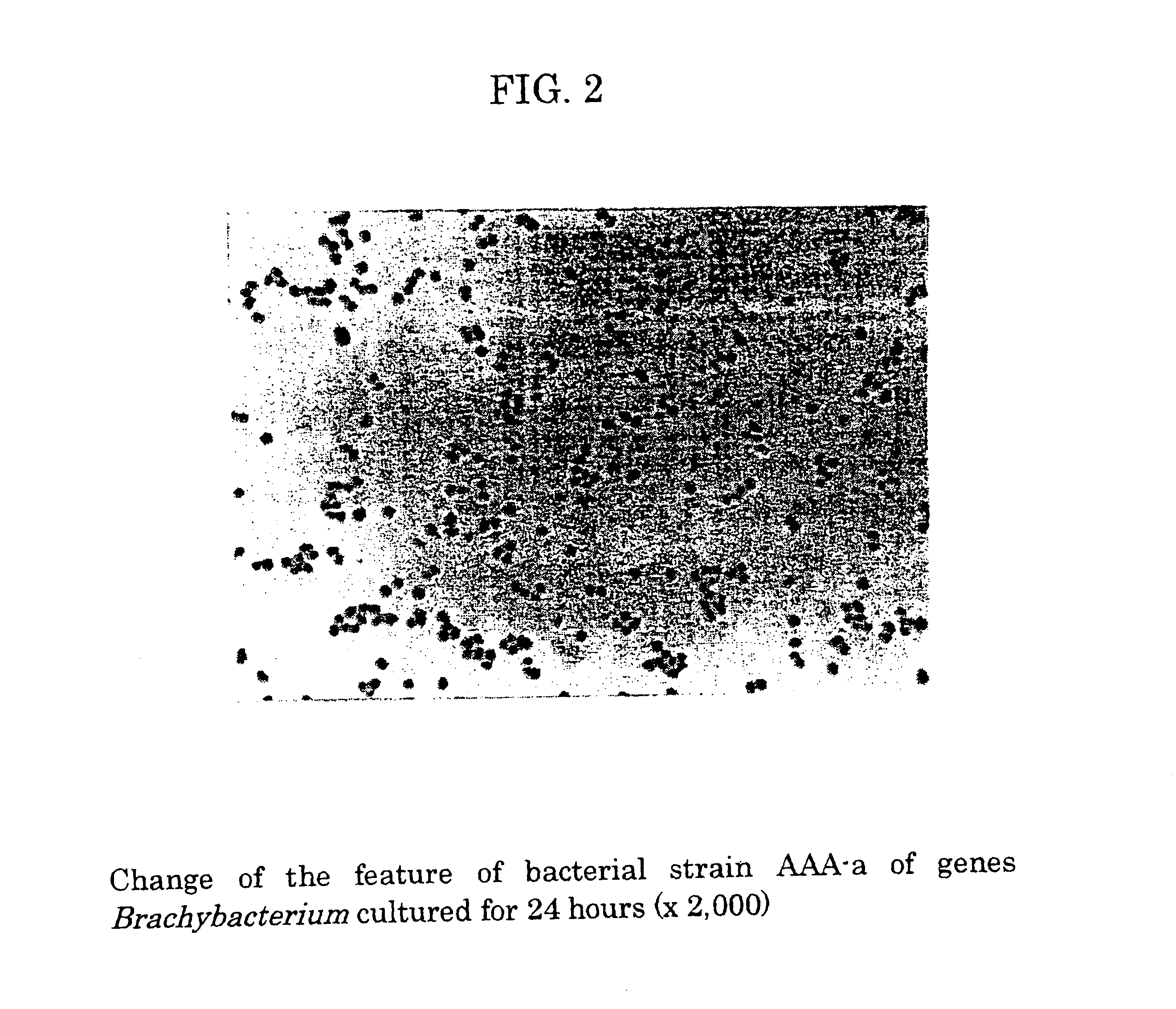Animal papilla disinfectants and method of improving microbial environment
a technology of animal papilla and disinfectant, applied in the field of disinfectants, can solve the problems of inability to achieve preventive effects against mastitis-causing bacteria for what is called environmental mastitis, inability to improve the microorganism-environment of animals in the surroundings where animals live, and inability to predict the effect of environmental mastitis-causing bacteria, etc., to achieve the effect of improving the microorganism-environment and improving the microorganism
- Summary
- Abstract
- Description
- Claims
- Application Information
AI Technical Summary
Benefits of technology
Problems solved by technology
Method used
Image
Examples
example 1
First of all, a culture medium of the following composition was prepared.
Culture Medium
Peptone 5 g
Meat extract 5 g
Water 500 ml
pH of culture medium 6.8.+-.0.2
A bacterial strain of the genus Brachybacterium AAA-a was inoculated in the culture medium of the above composition, for agitation culture at 30.degree. C. When the bacteria reached a logarithmic phase, the culture solution was diluted with a sterilized aqua pura to adjust the viable cell number 1.times.10.sup.8 / ml; and the adjusted solution was used as a post-dipping solution for pre-dipping at teats of cows by the conventional method, the bacterial number of Staphylococcus aureus on the surface of skin of teats was decreased. The same experiment was done on other Brachybacterium species other than the aforementioned species. The similar effect was obtained, although the function was poorer than that observed in the case of the novel bacterial strain.
Moreover, the said culture solution was diluted 100 times with aqua pura, to ...
PUM
| Property | Measurement | Unit |
|---|---|---|
| size | aaaaa | aaaaa |
| size | aaaaa | aaaaa |
| pore size | aaaaa | aaaaa |
Abstract
Description
Claims
Application Information
 Login to View More
Login to View More - R&D
- Intellectual Property
- Life Sciences
- Materials
- Tech Scout
- Unparalleled Data Quality
- Higher Quality Content
- 60% Fewer Hallucinations
Browse by: Latest US Patents, China's latest patents, Technical Efficacy Thesaurus, Application Domain, Technology Topic, Popular Technical Reports.
© 2025 PatSnap. All rights reserved.Legal|Privacy policy|Modern Slavery Act Transparency Statement|Sitemap|About US| Contact US: help@patsnap.com



